Crystals, X-rays and Proteins
Comprehensive Protein Crystallography
by D. Sherwood and J.
Cooper [1],
[2].
Oxford University Press
(2010, 2015)
ISBN: 019955904X
Errata for the revised paperback
(2015) edition:
The most important ones
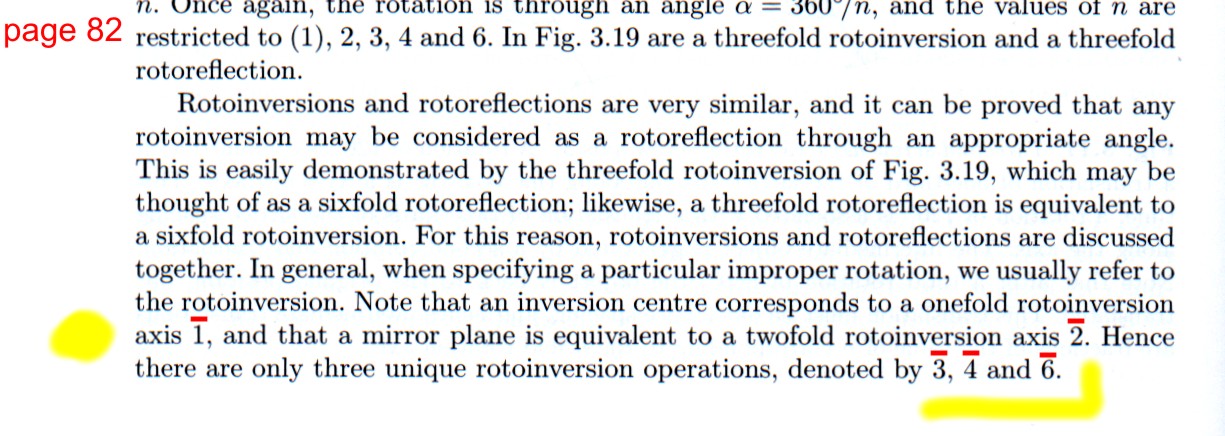


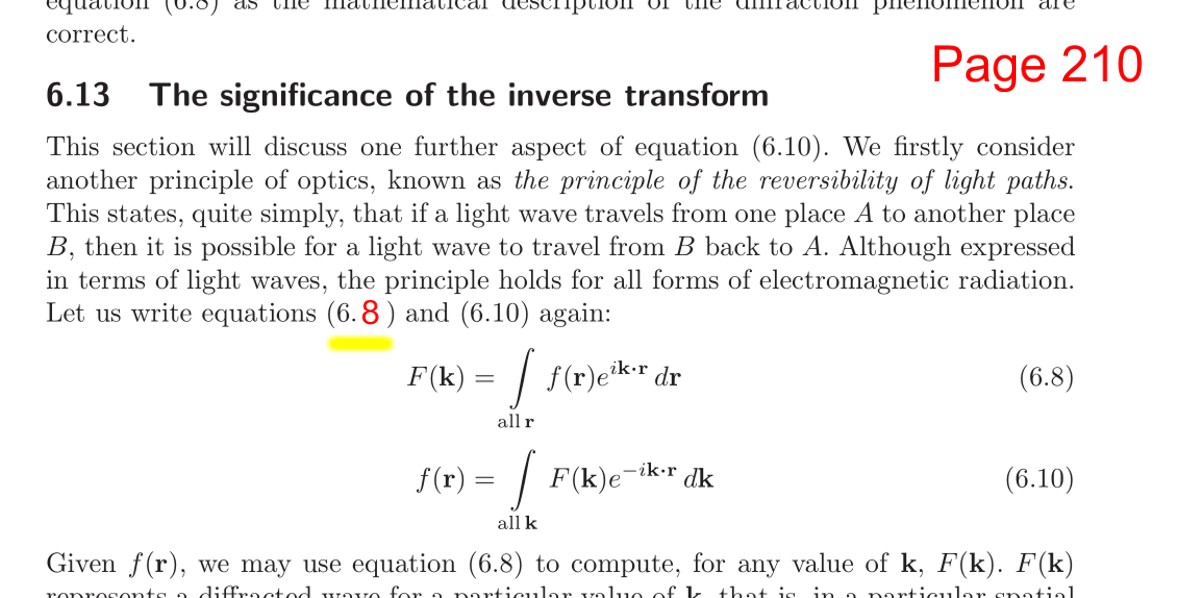
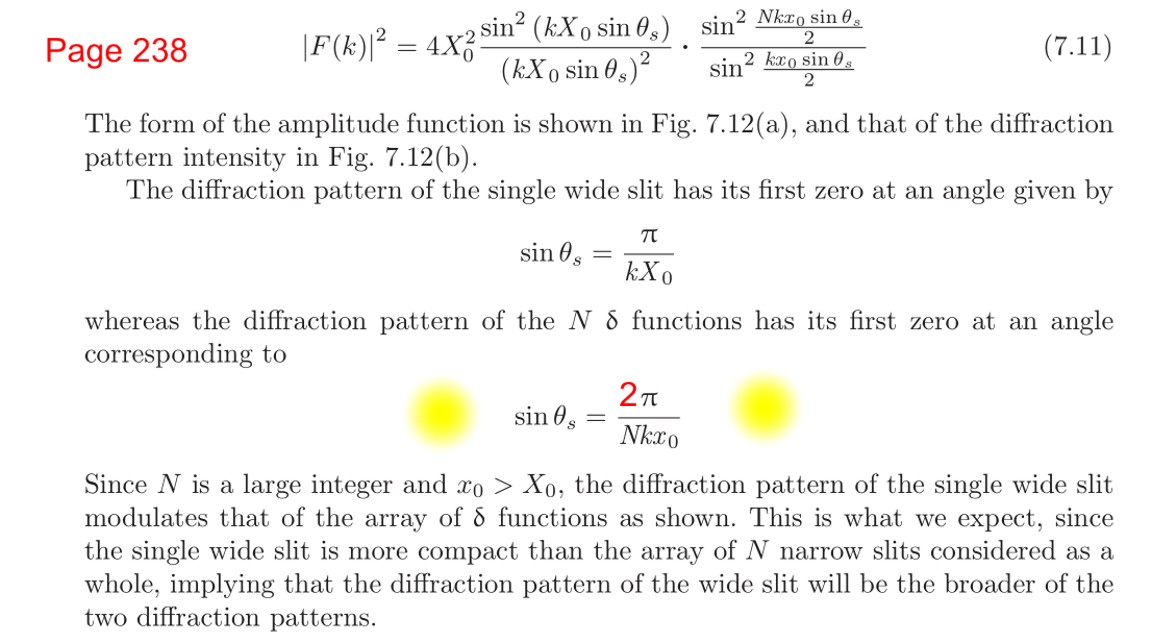
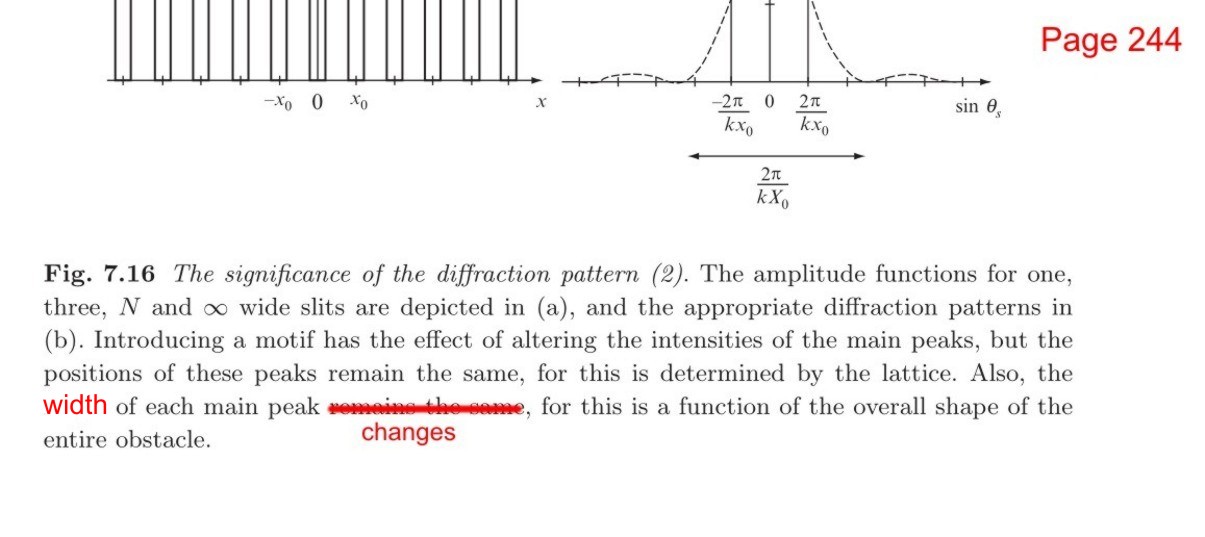
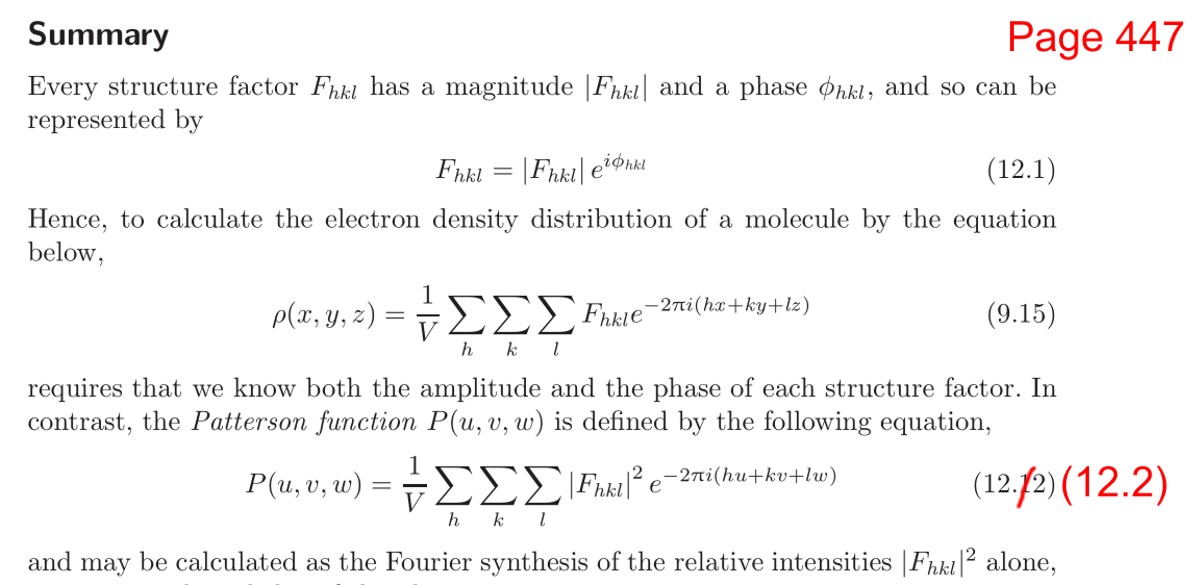
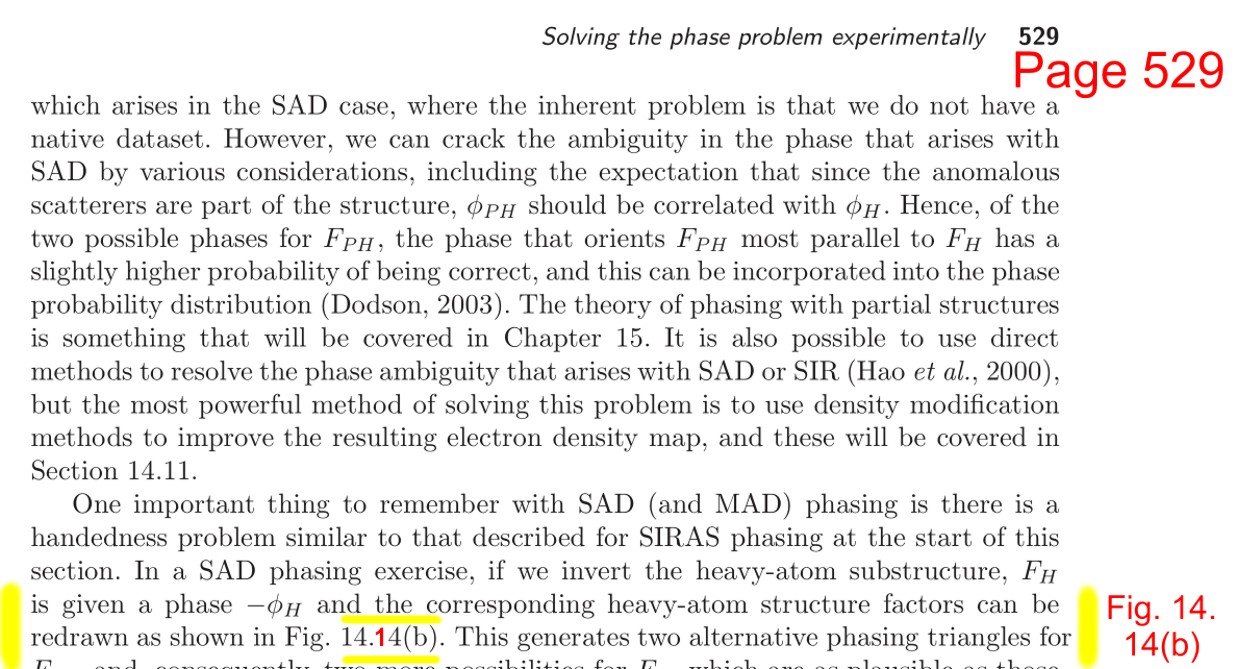
p. 302, line 1, replace 'be can' with 'can be'.
p. 588, 3rd para, line 1, replace 'important the check' with
'important to check'.
Chapter 3. It should have been stated that with triclinic unit
cells, the convention is for all angles to be acute, though
the convention allows for two possibilities: all acute or all
obtuse. Thanks to Dr Ian Tickle (Global Phasing) for making
this point.
Typographical / stylistic - i.e.
the least important ones
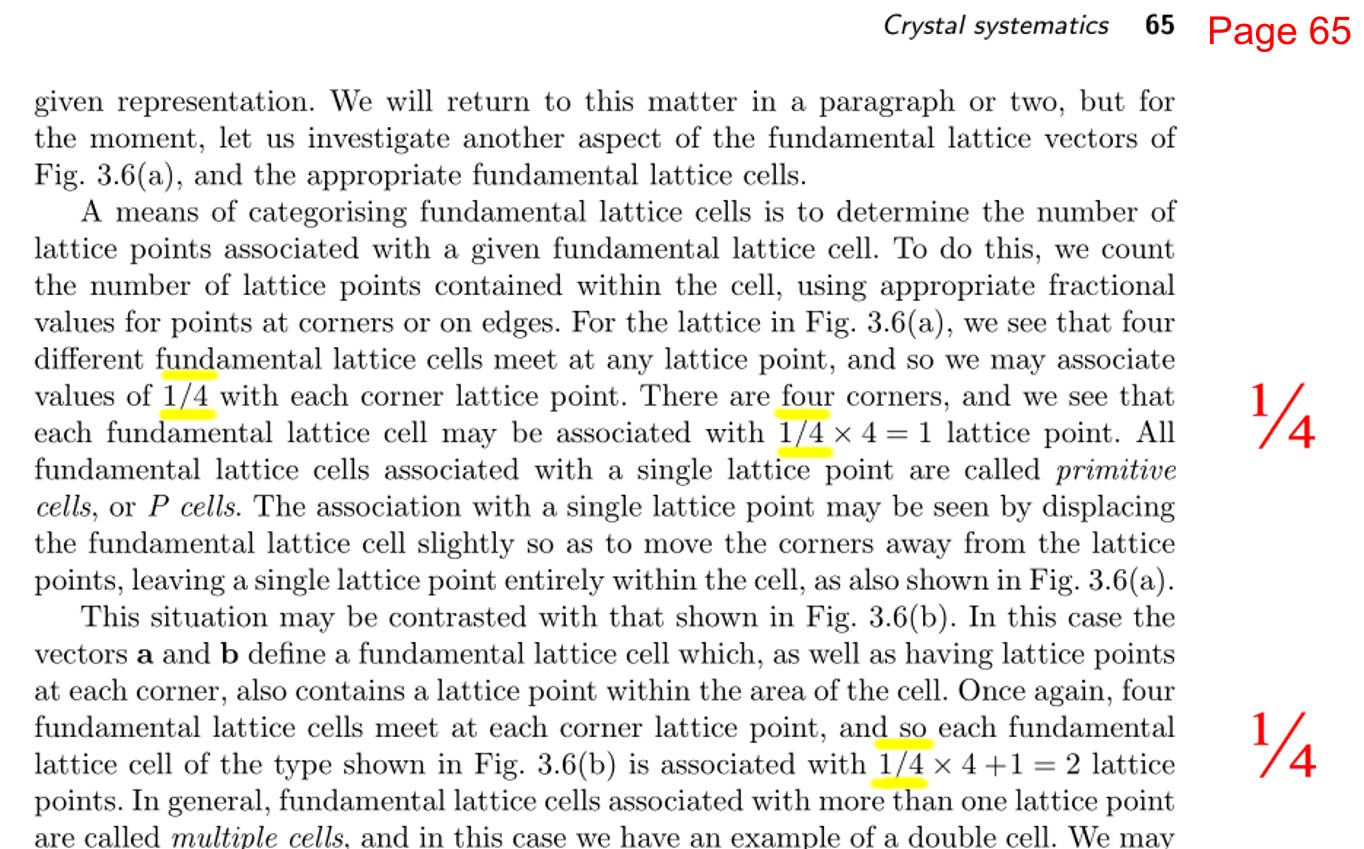
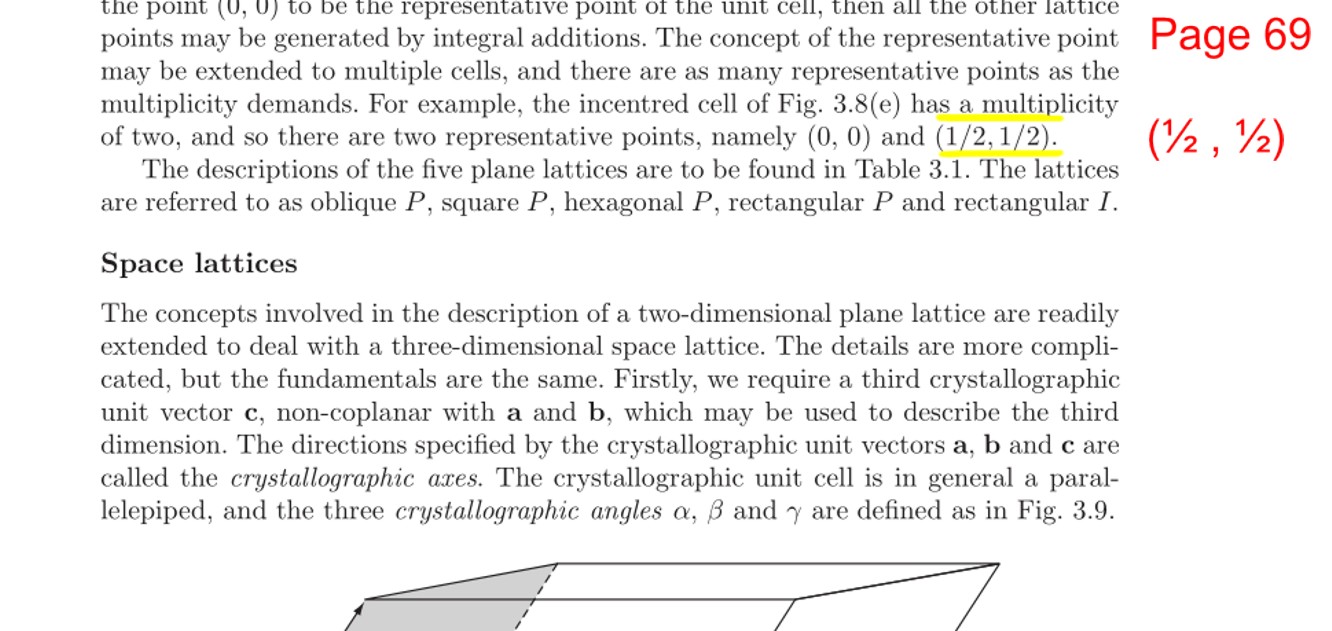
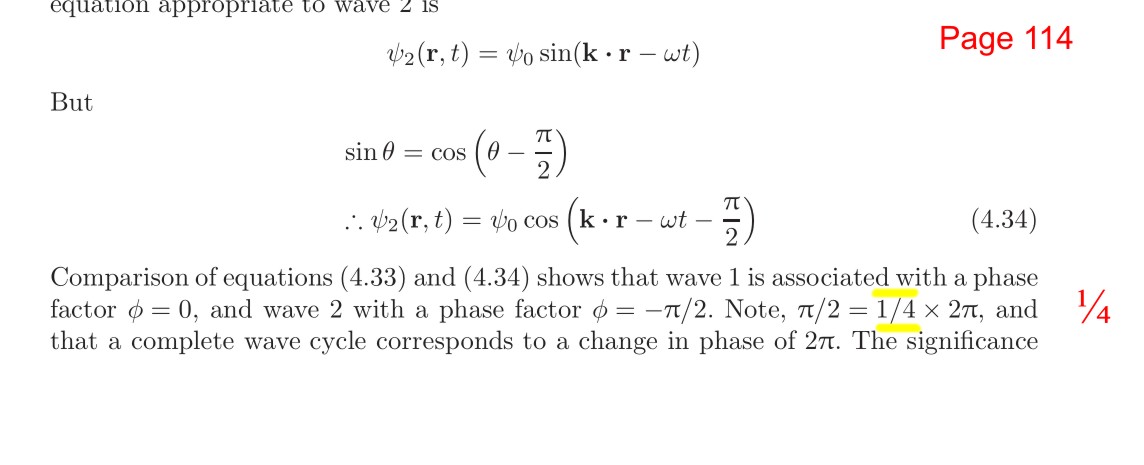
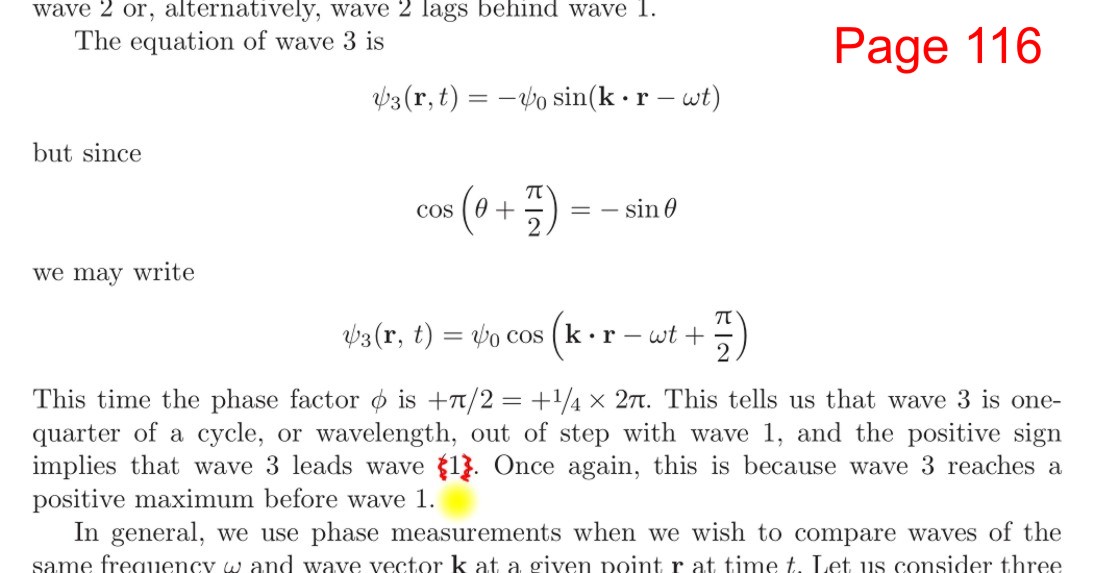
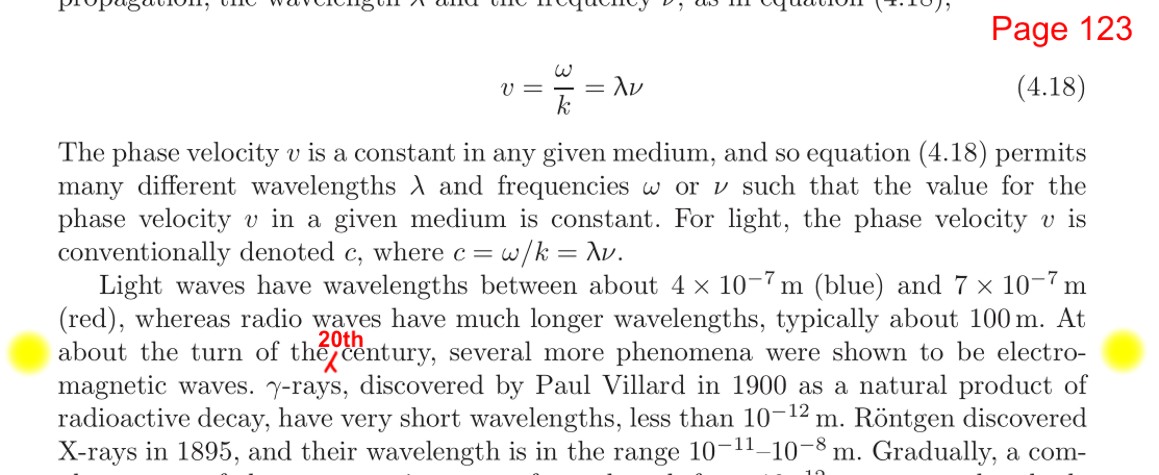

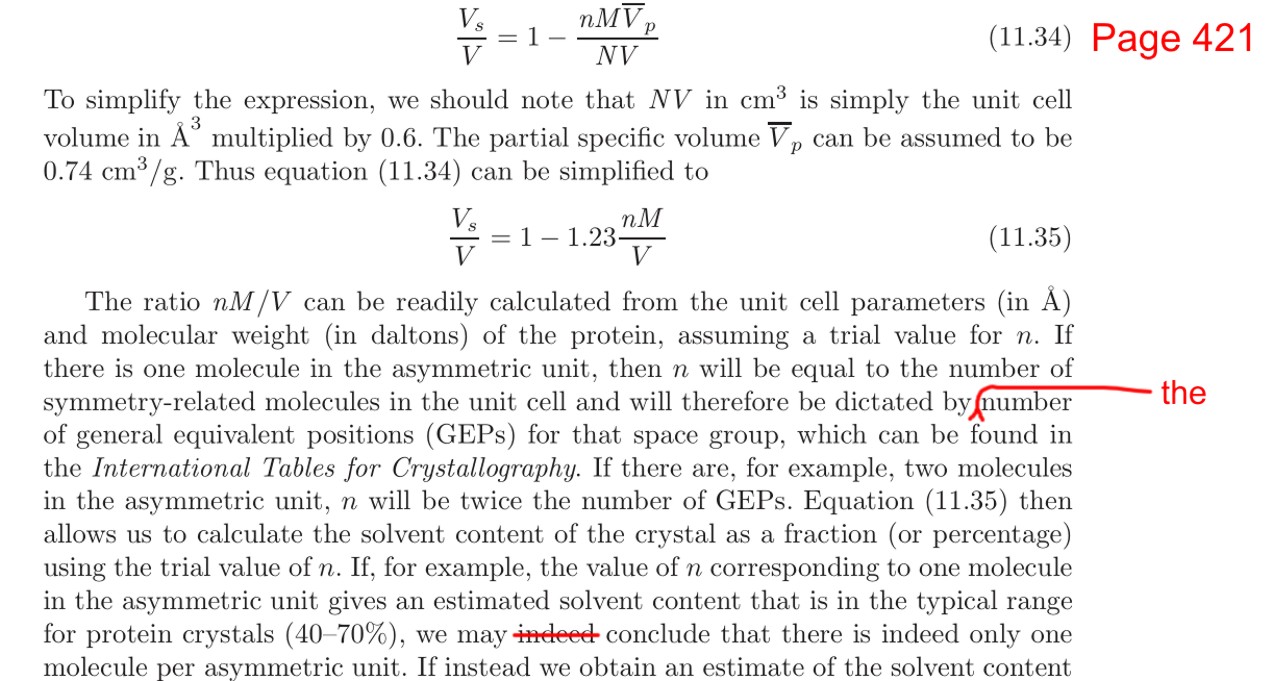
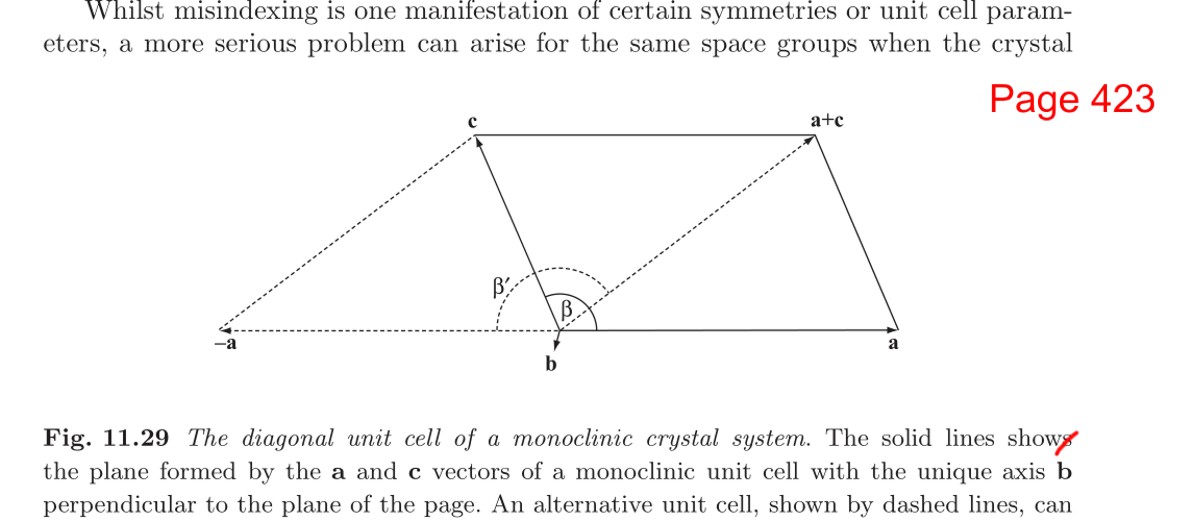

Ditto for pages 444, 445 and 446 where all of the
1/2's should be formatted better.

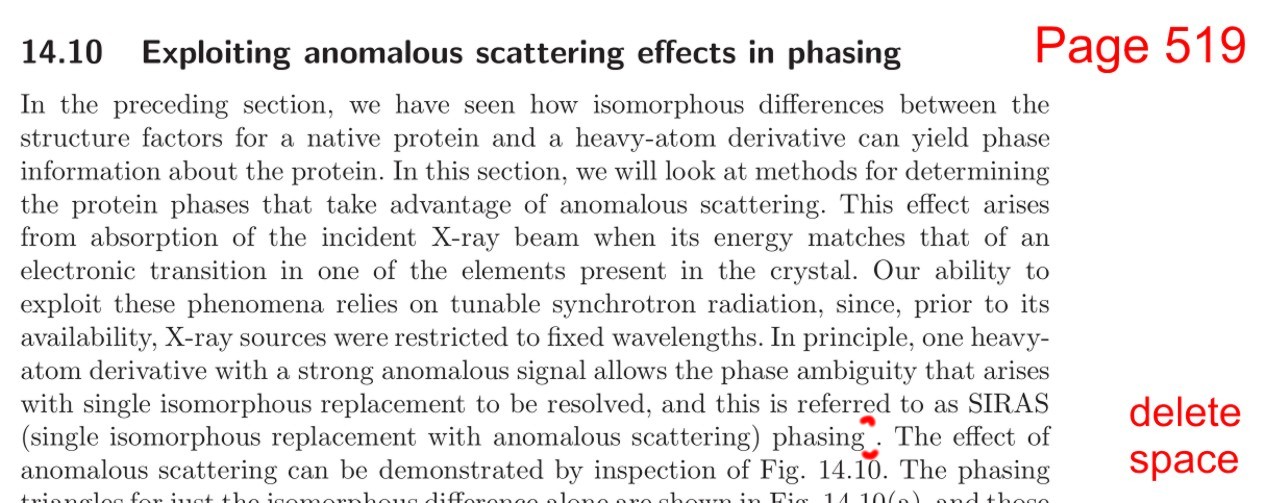
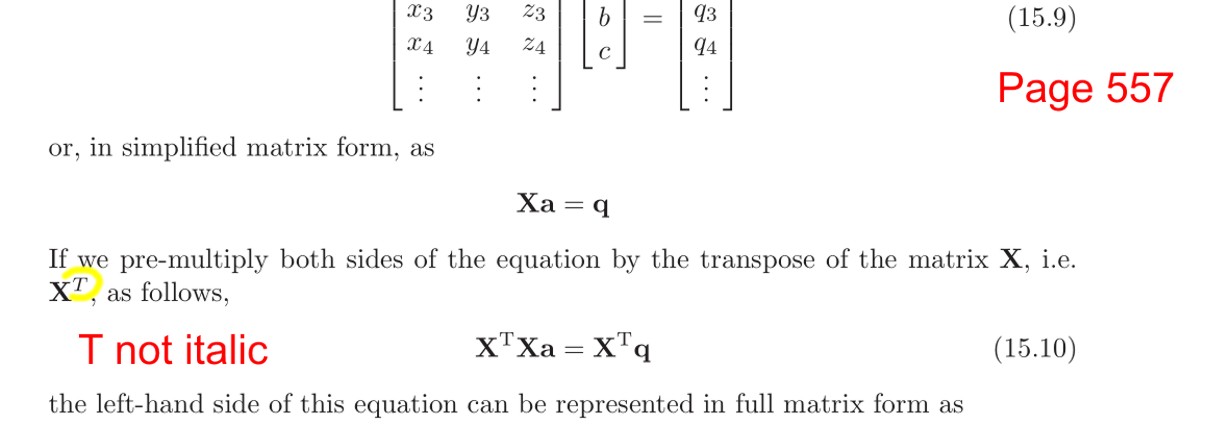
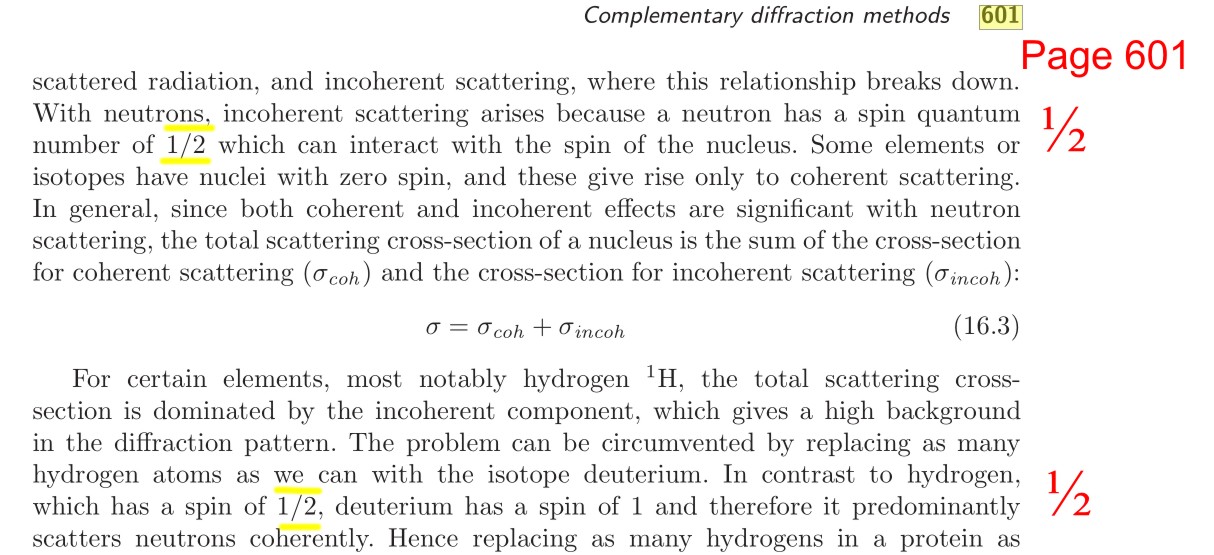
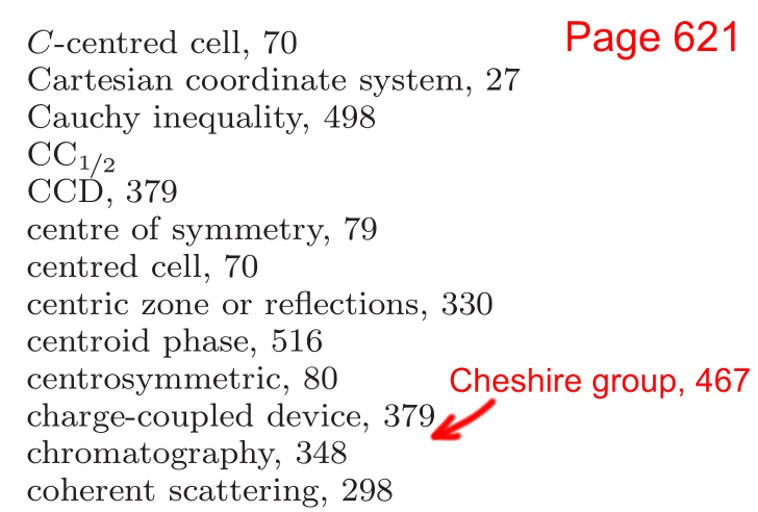
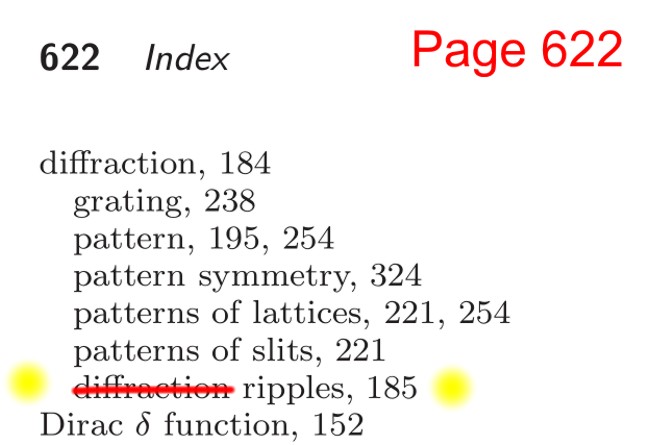
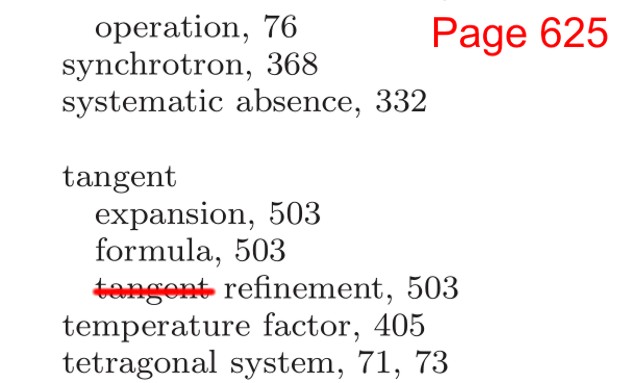

Errata for the hardback (2010)
edition:
The most important ones
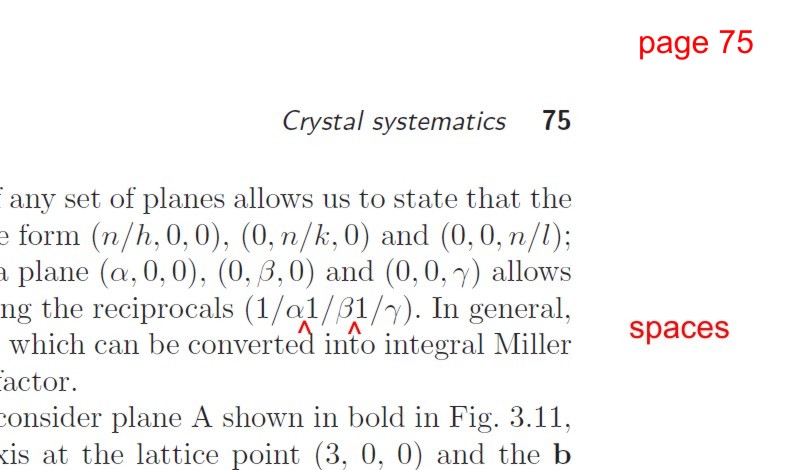
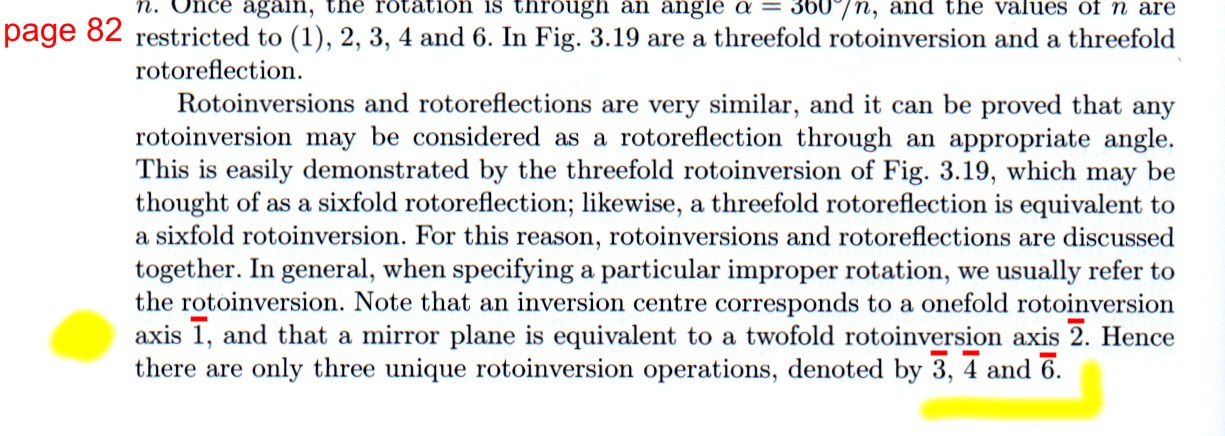

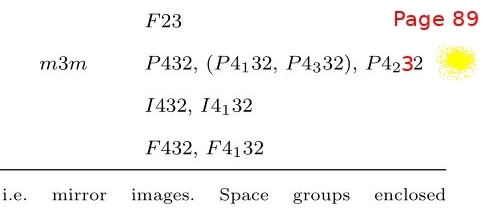
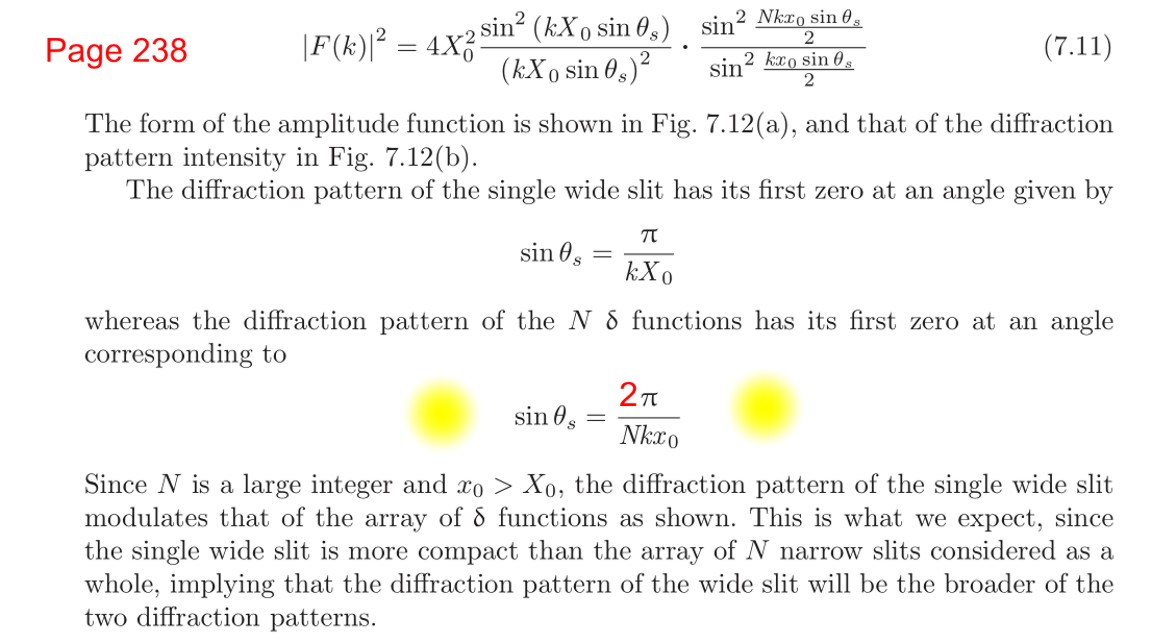
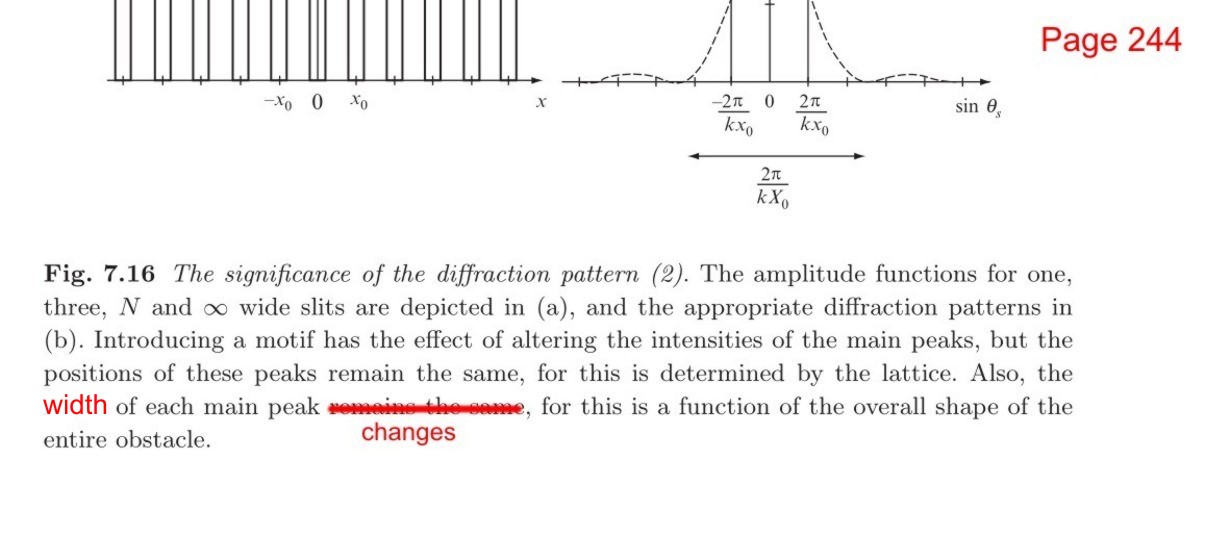
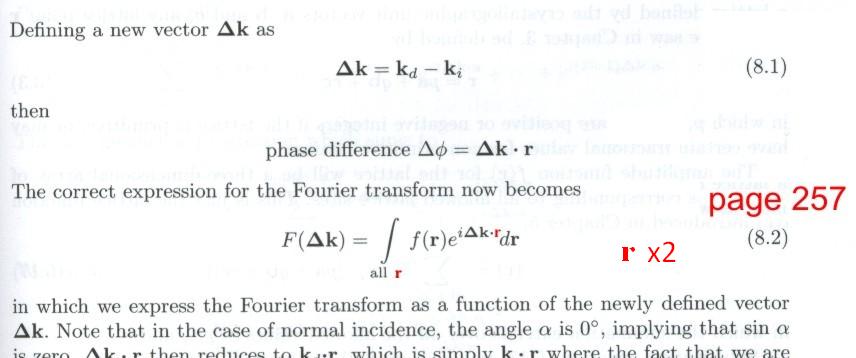
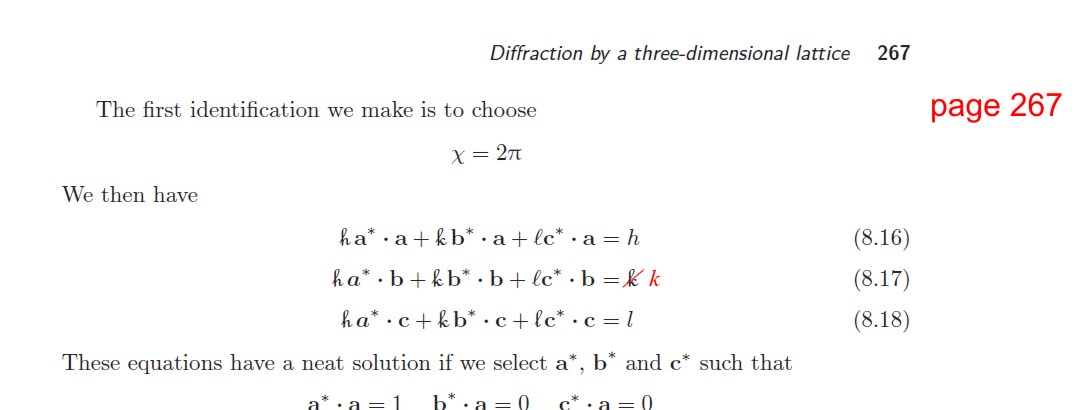

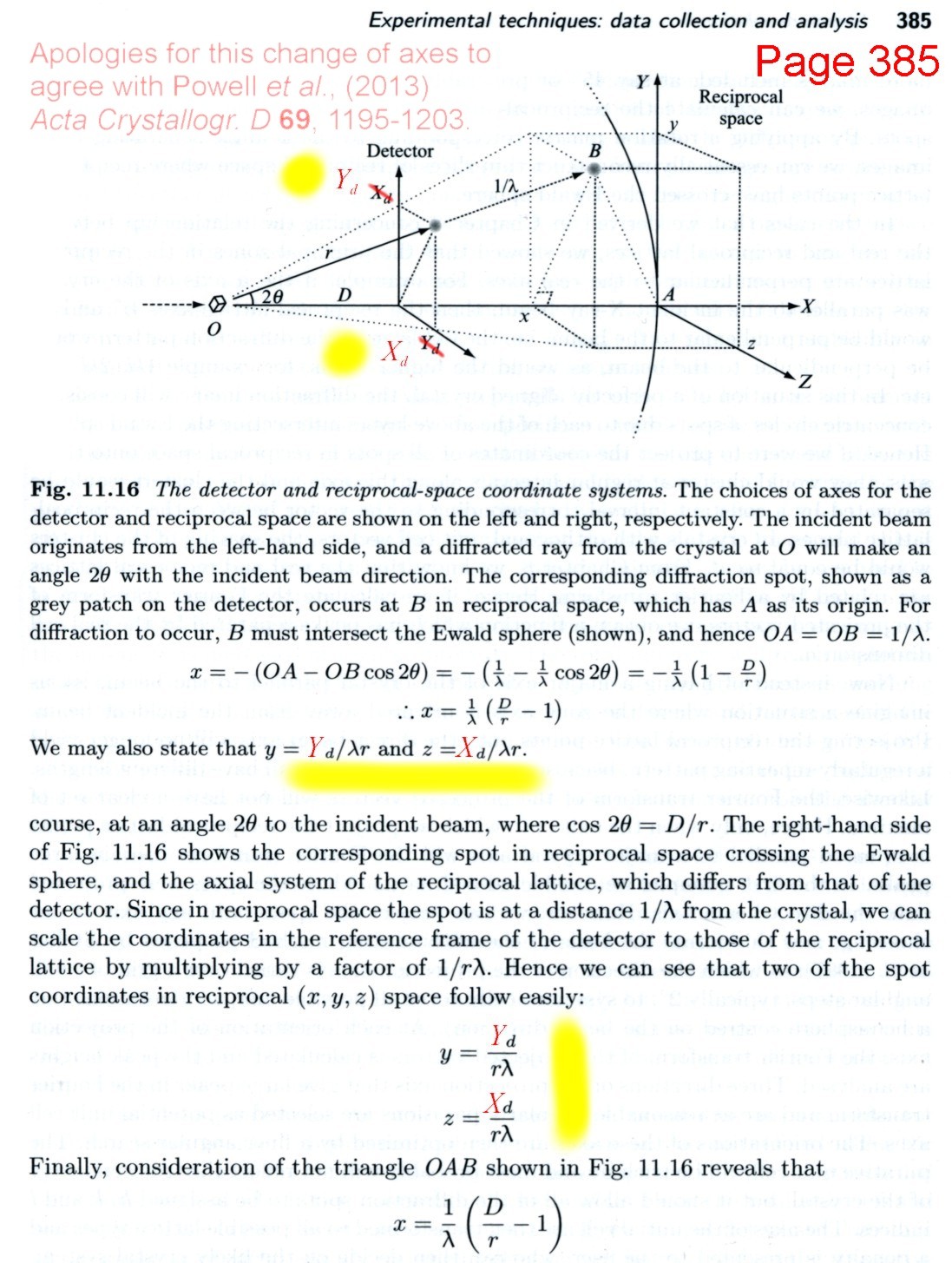
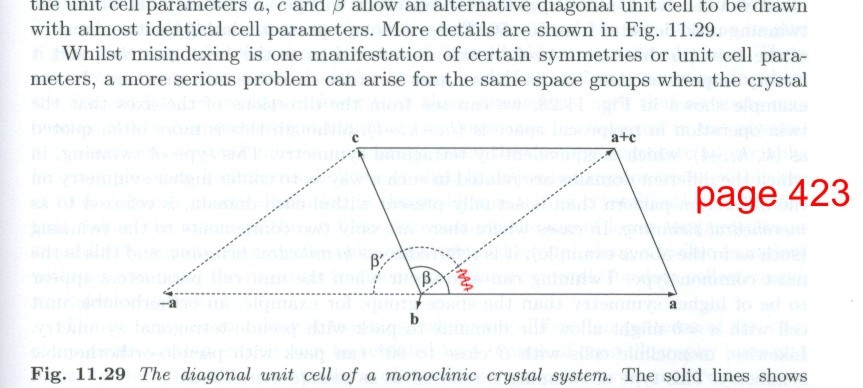
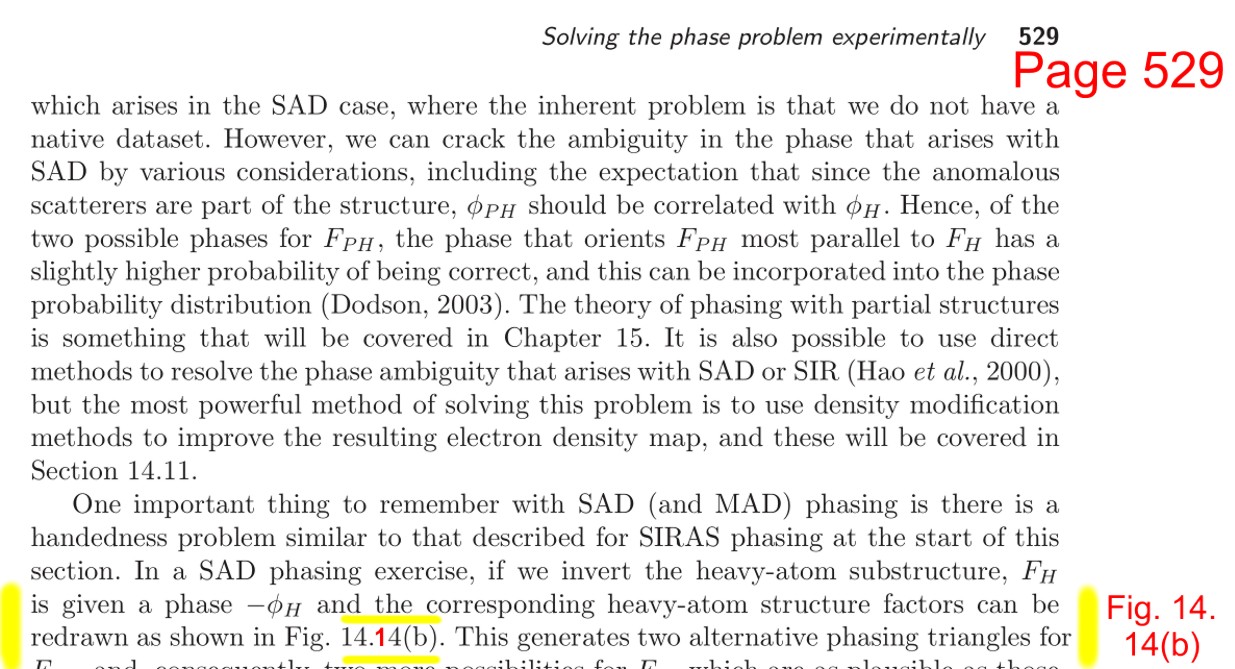
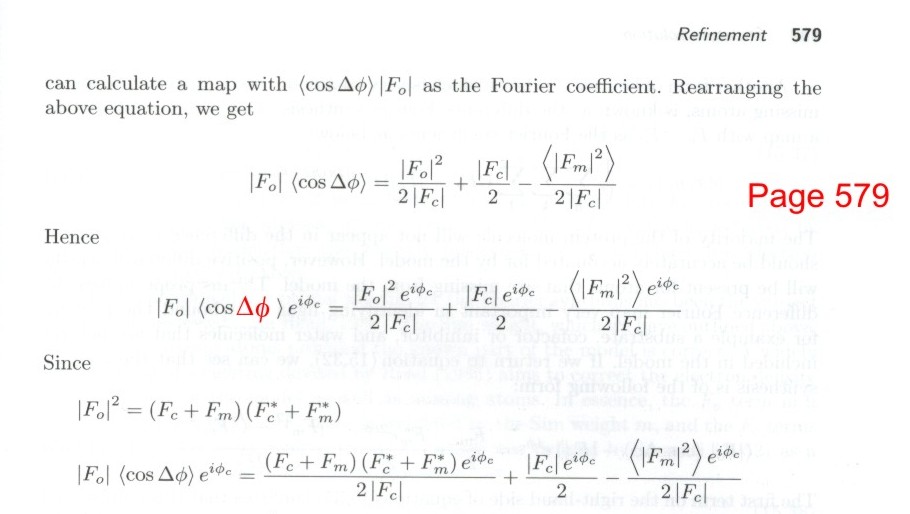
Significant
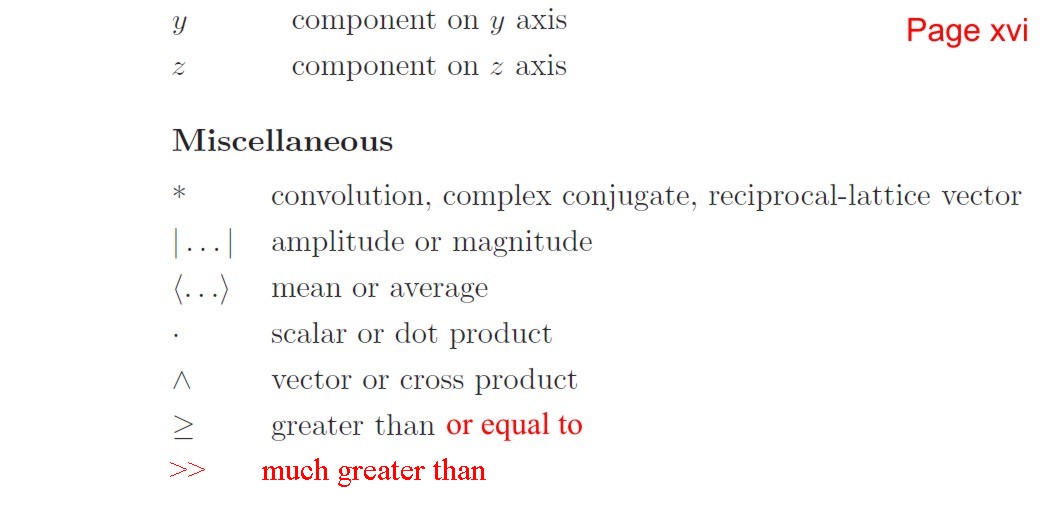
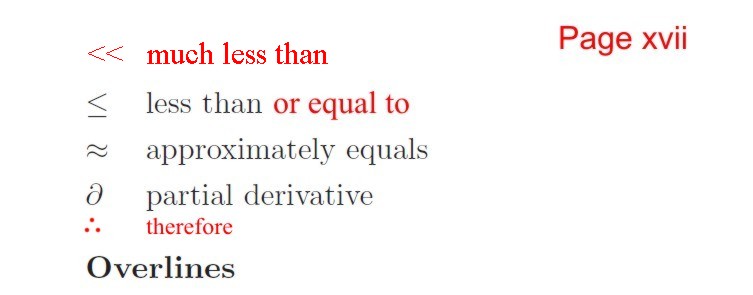
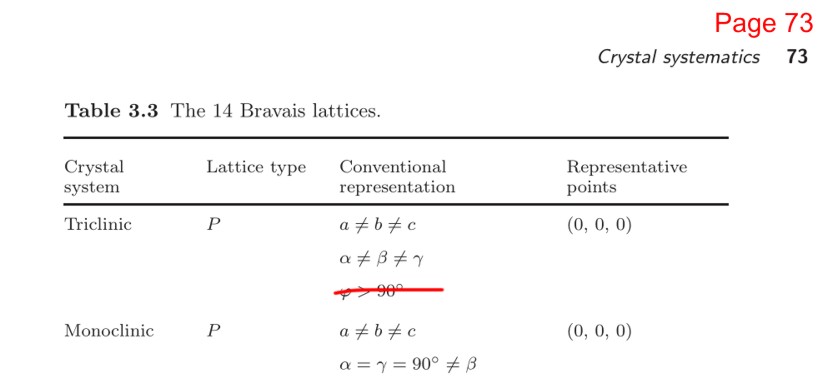
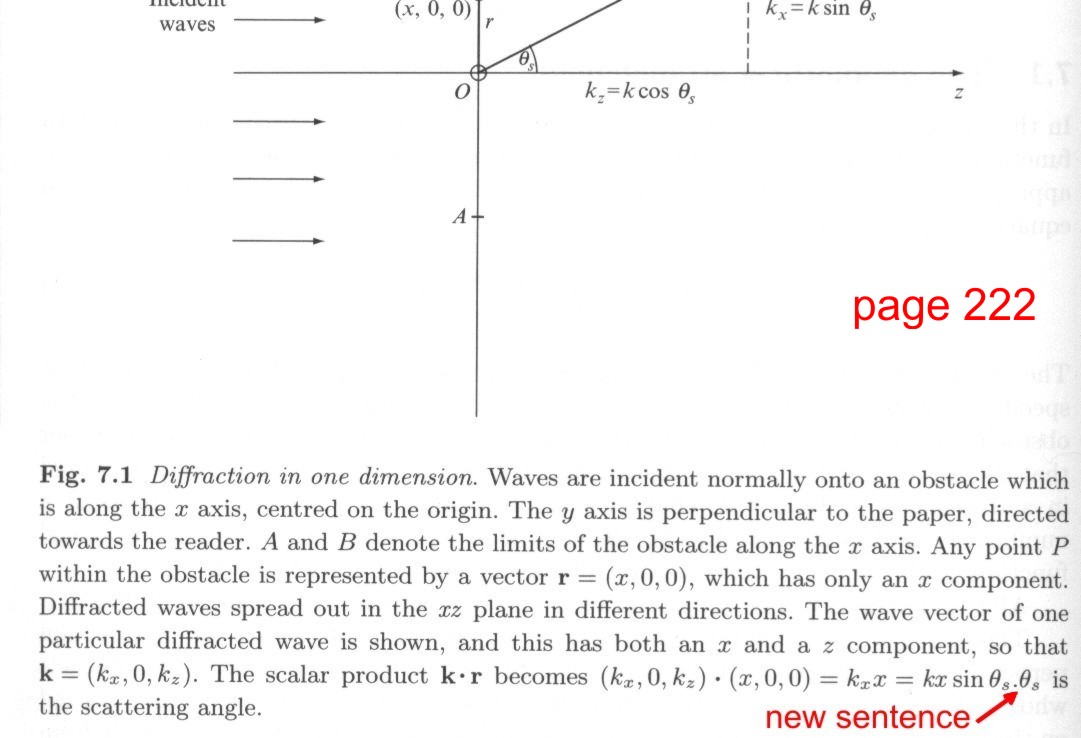
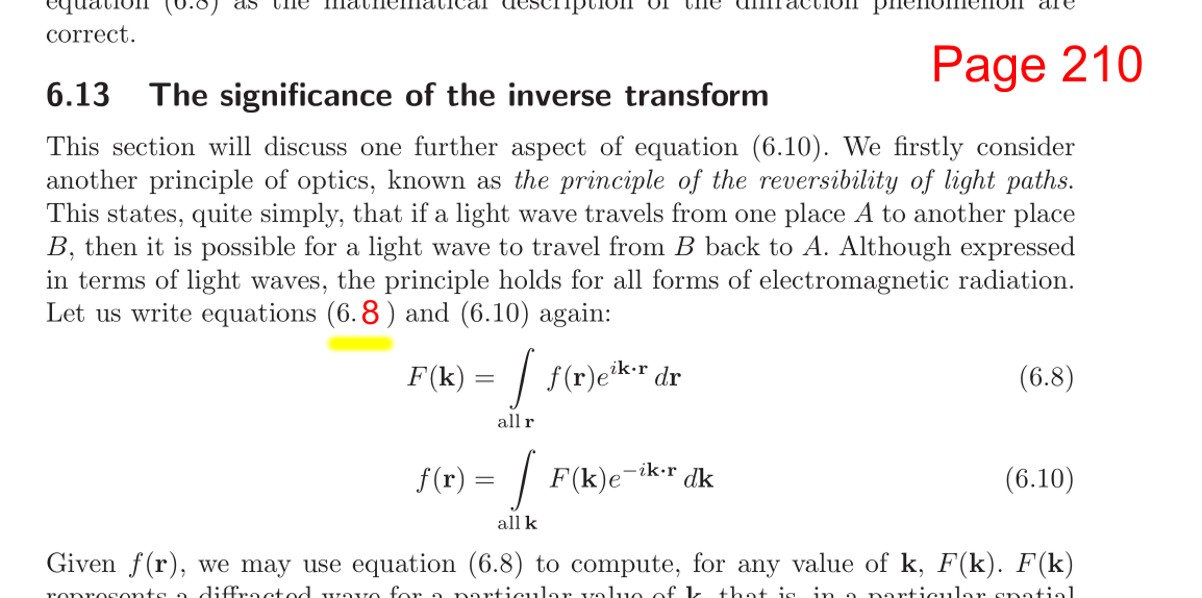
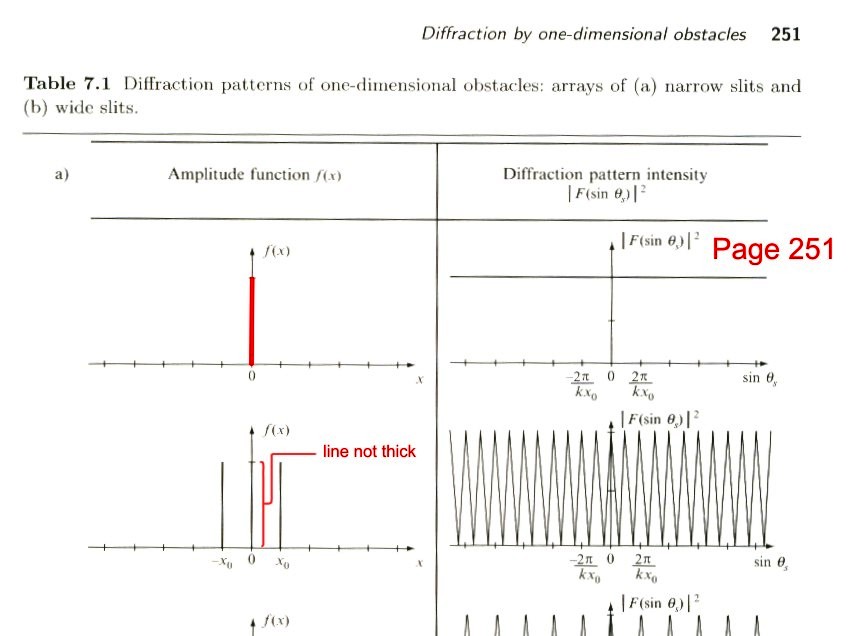
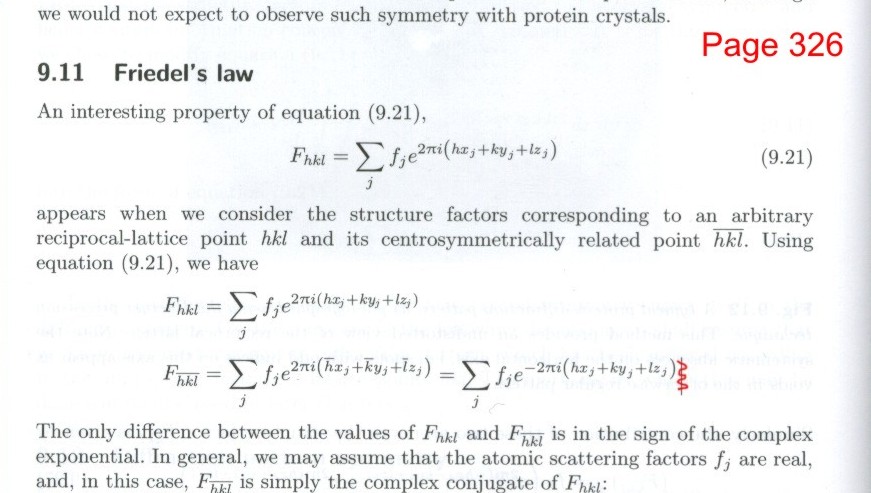
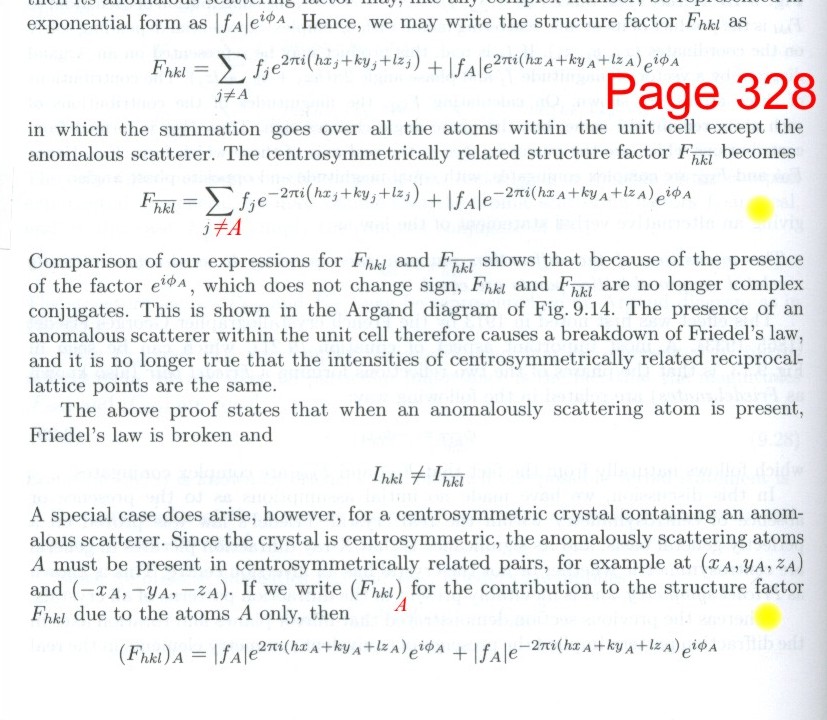
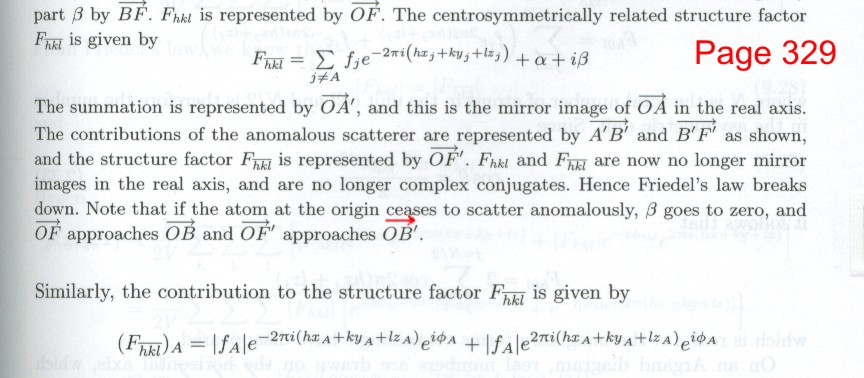
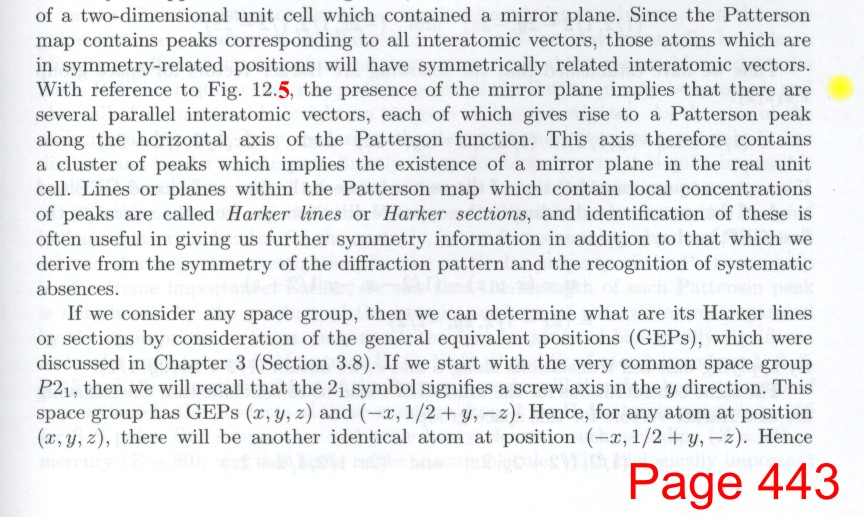
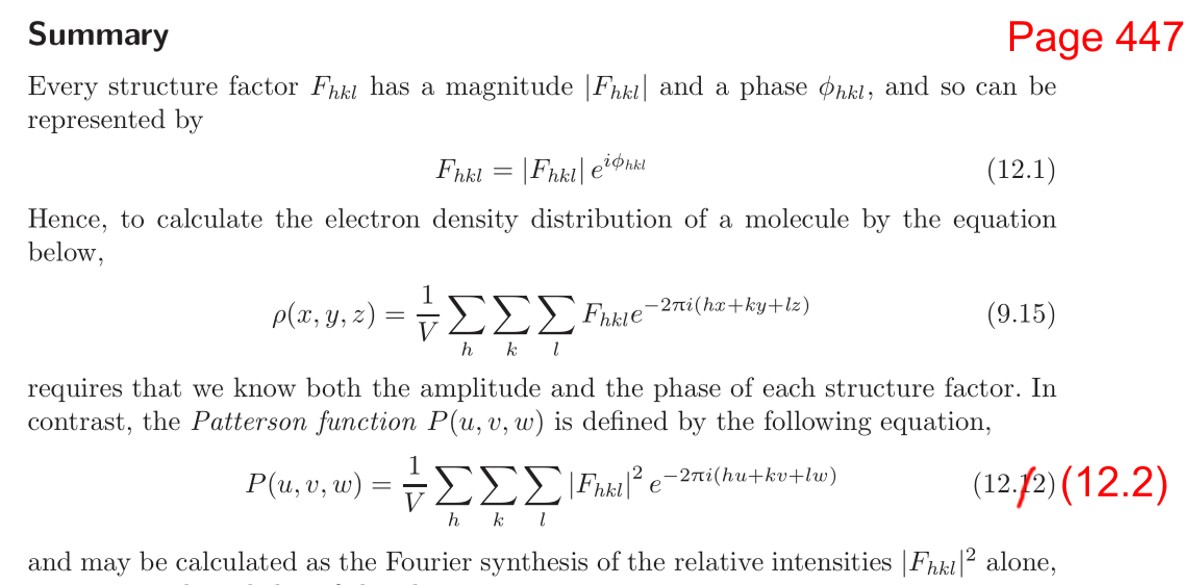
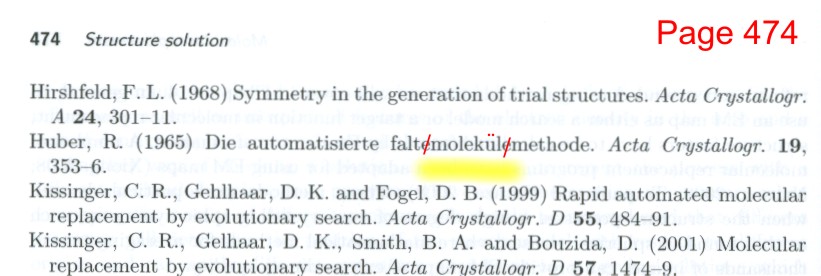
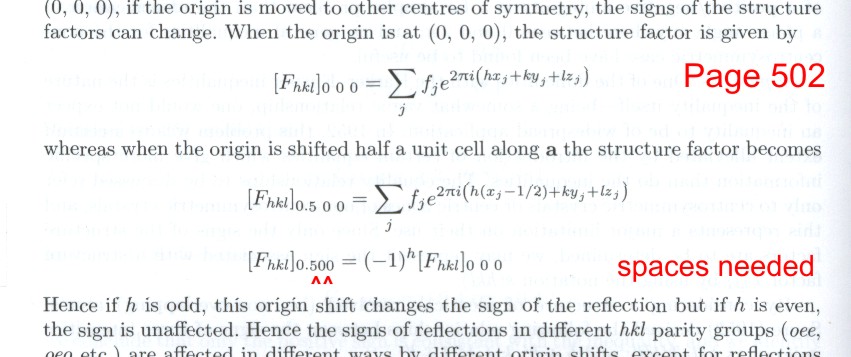

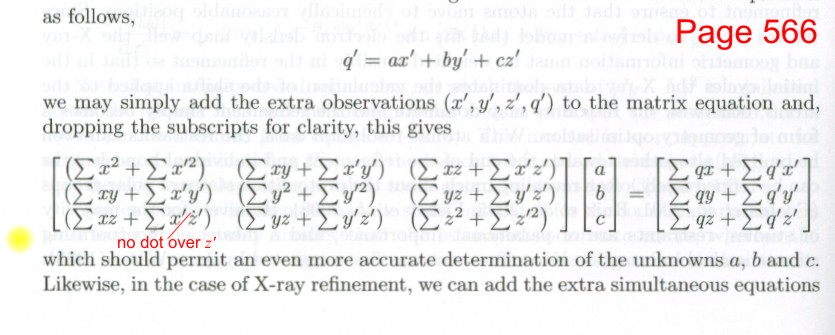
p. 422, Figure 11.28 should have been drawn with a more obviously equal to
b like this
since the cell is tetragonal.
Others
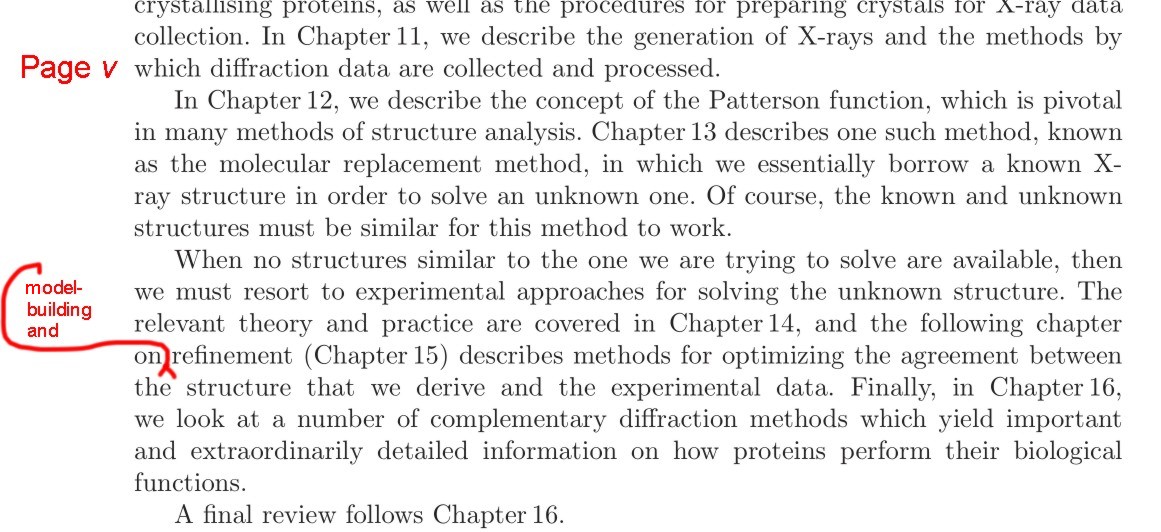
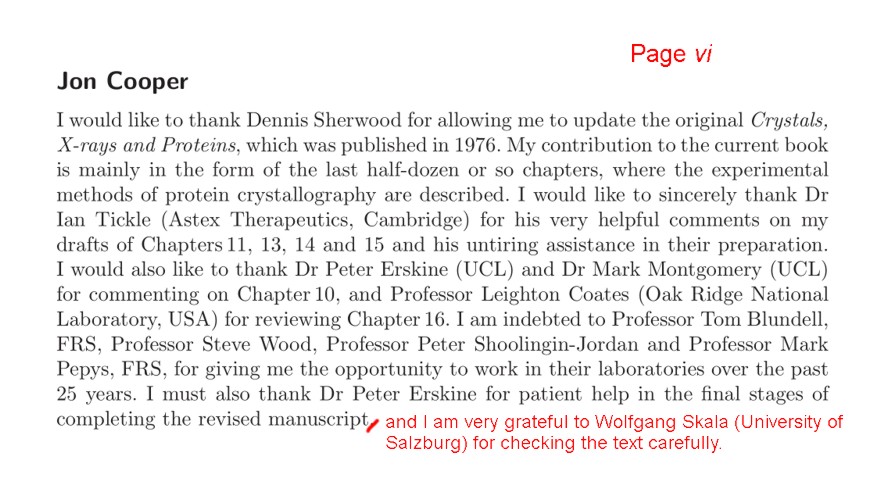
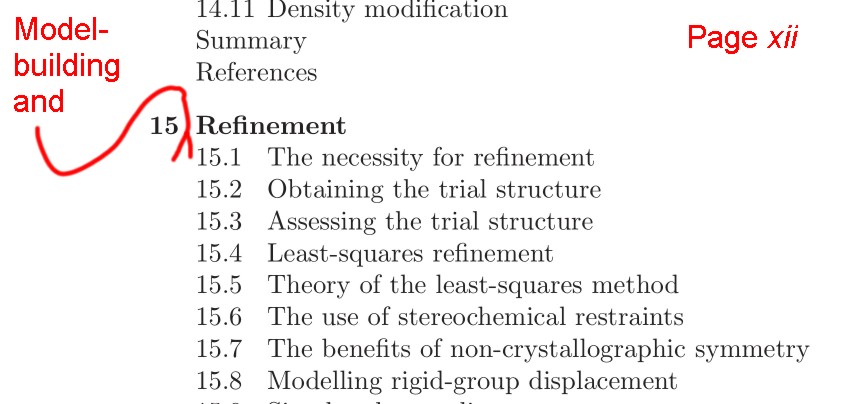
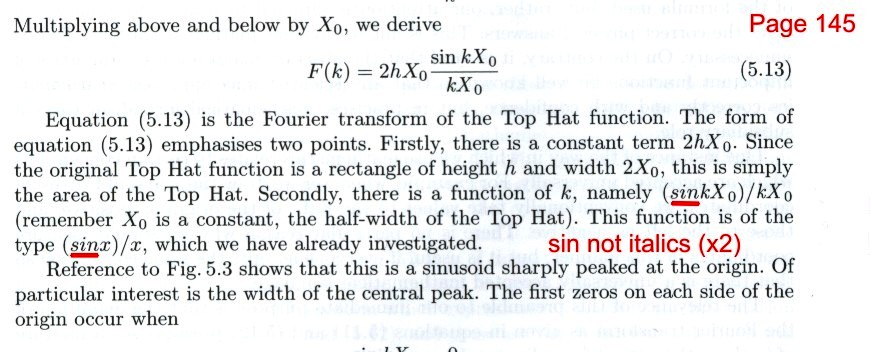
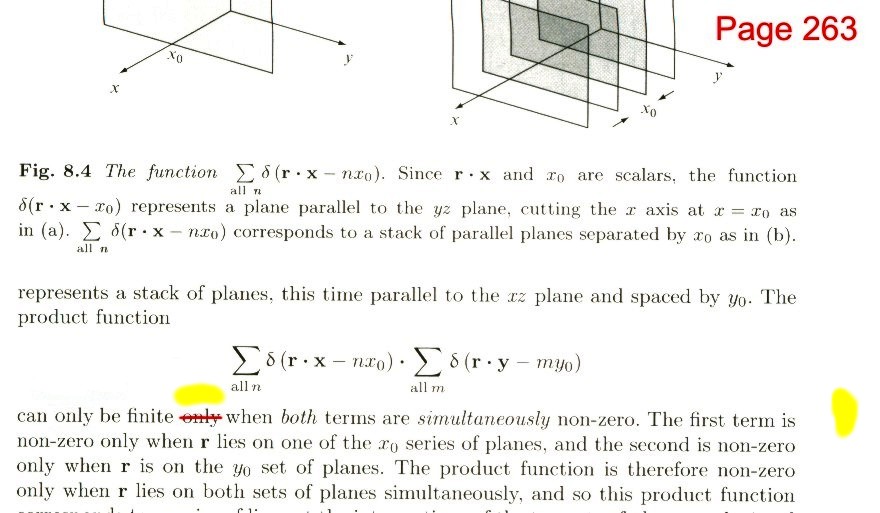
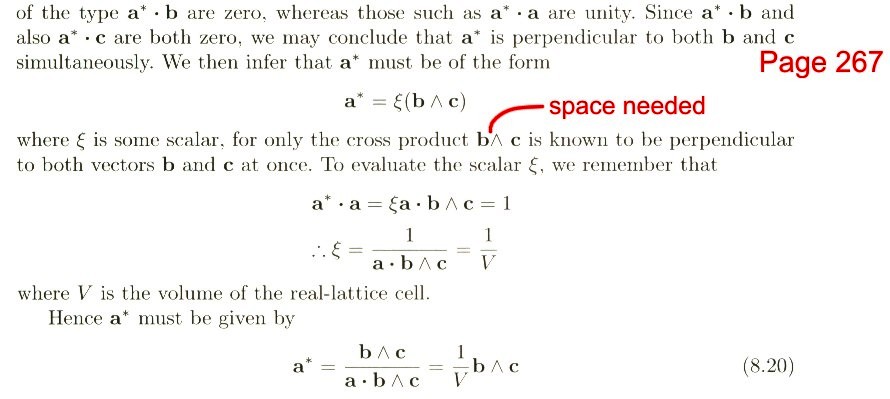
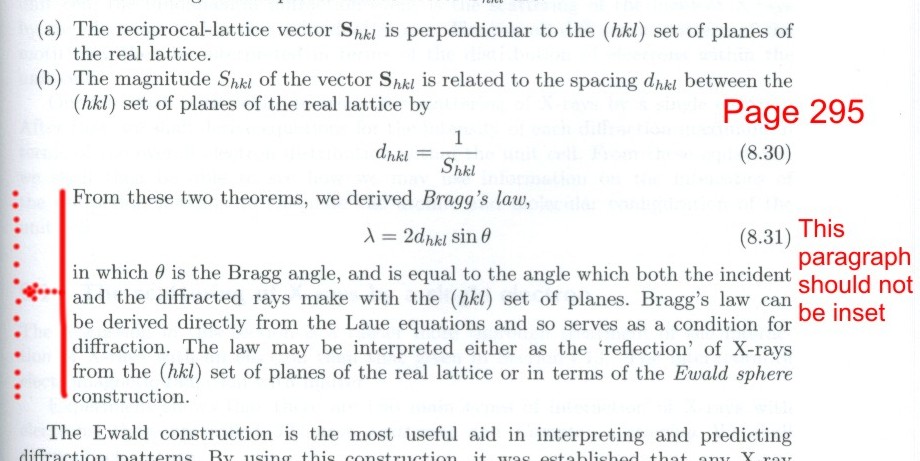
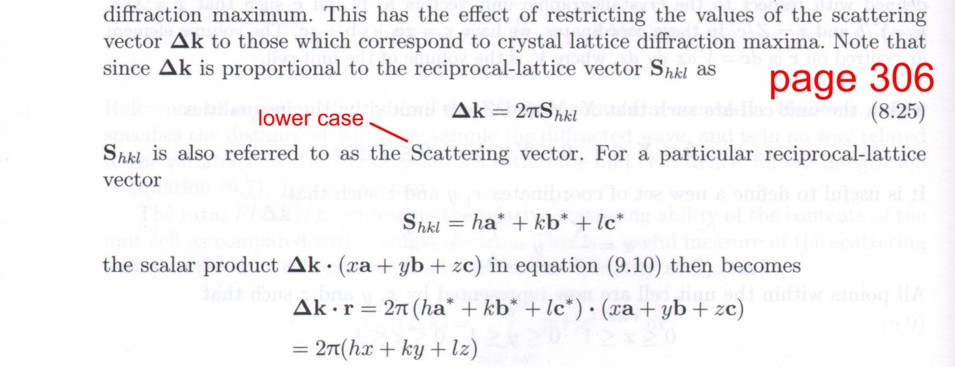
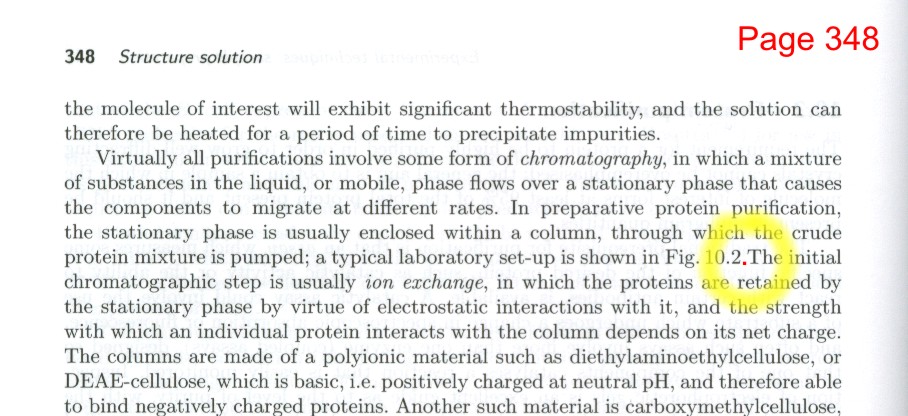
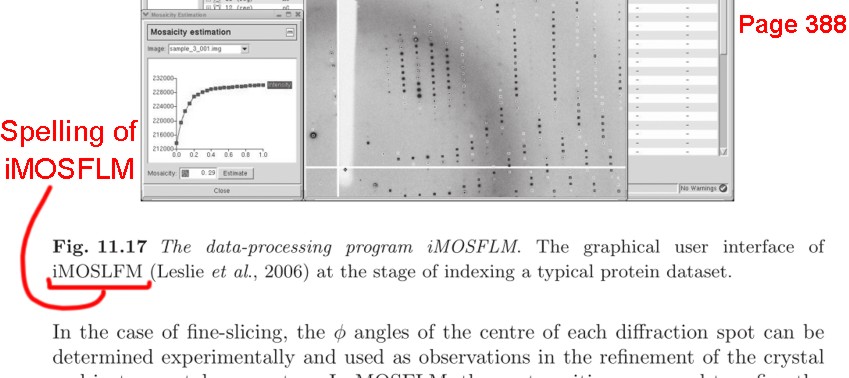


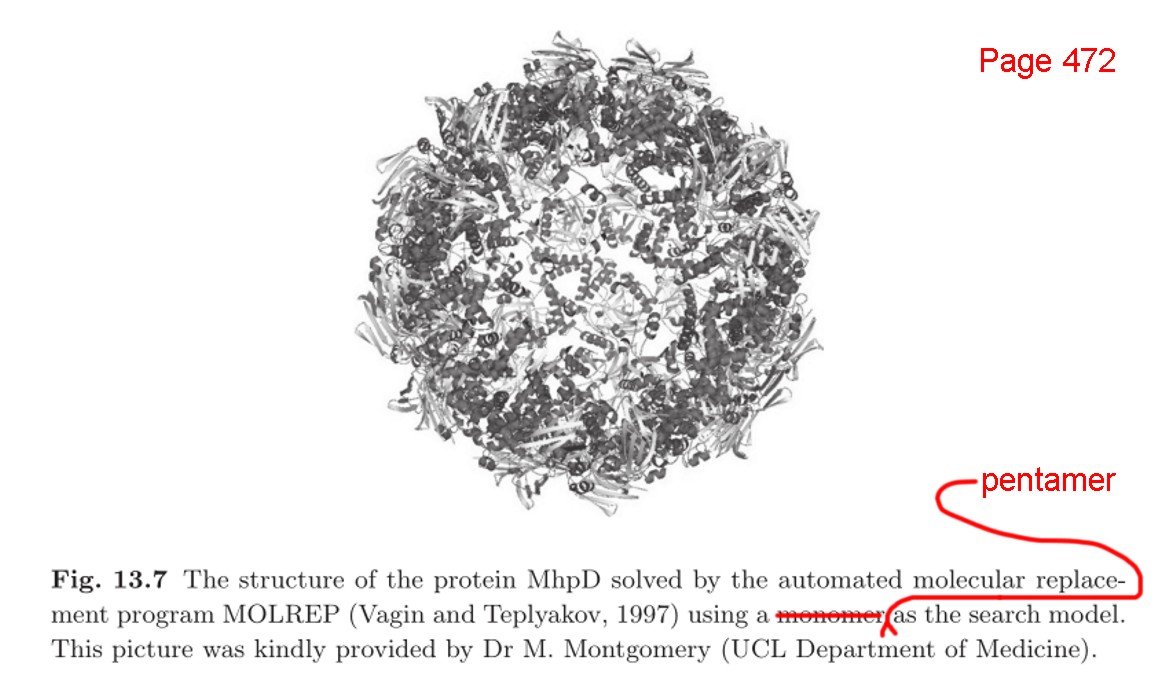
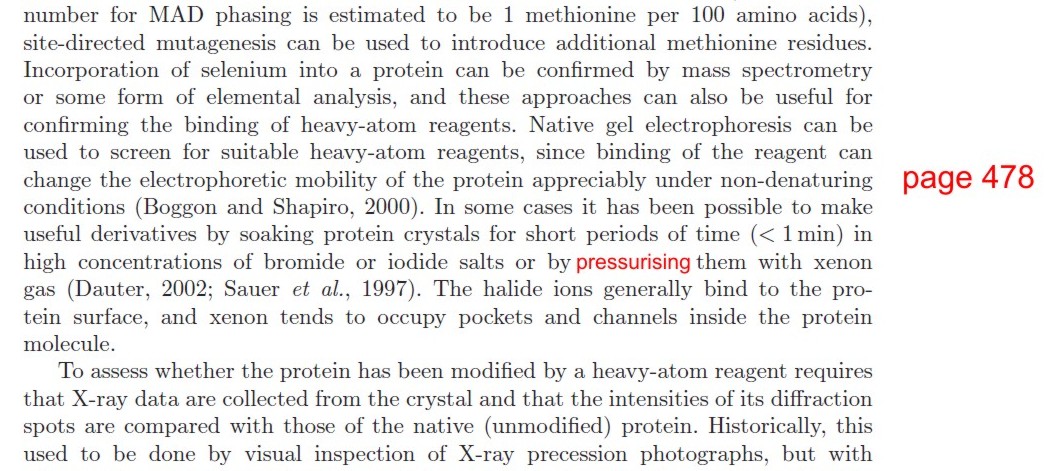
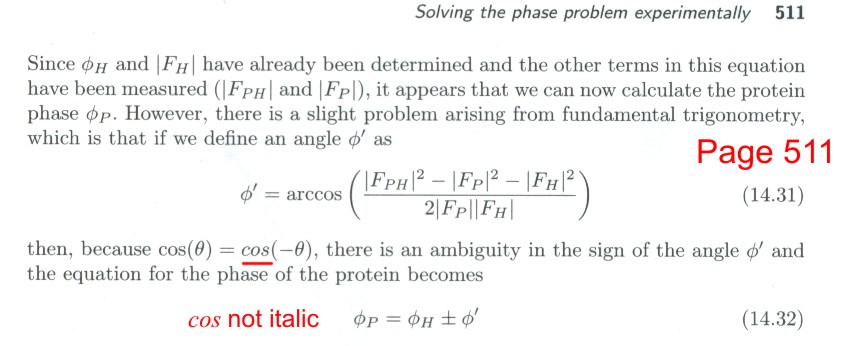
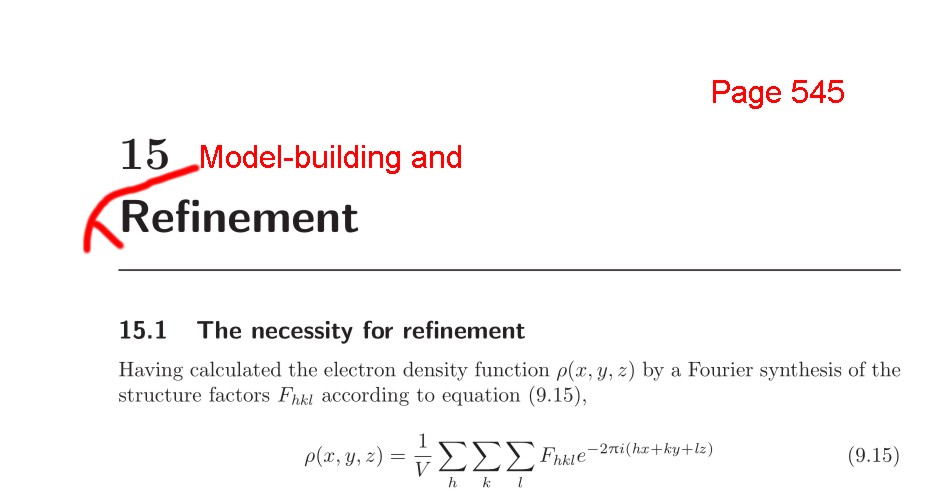
p. 132, under 'Pain...' in
'Bibliography' indent 'Both these books...'.
p. 183, under 'Papoulis...' indent 'Both these books...'.
p. 228, Fig. 7.4 legend. The alpha in the formula should be a
'proportional to' symbol.
p. 302, line 1, replace 'be can' with 'can be'.
p. 402, paragraph 2, line 5: Space between "Fig." and "11.23"
is too large.
p. 418, third to last line:
Space between "equation" and "(11.32)" is too large.
p. 420, paragraph 2, line
-2: Space between "equation" and "(11.33)" is too large.
p. 421, between eq. (11.34)
and (11.35), last line: Space between "equation" and "(11.34)"
is too large.
p. 422, paragraph 2, line 5
and line -3: Space between "Fig." and "11.28(2)"/"11.28(b)" is
missing.
p. 423, paragraph 1,
line 13: Space between "equation" and "(14.1)" is too large.
p. 424, paragraph 1, line
-1: (Parsons 2004) should be Parsons (2004).
p. 557, 5th equation: The
'T' superscript to 'X' should be plain text, i.e. not italic
(as in the equations above).
p. 588, 3rd para, line 1, replace 'important the check' with
'important to check'.
p. 616, add "Rupp, B. Biomolecular Crystallography:
Principles, Practice, and Application to Structural Biology.
Garland Science, New York, 2009." to 'Reference works' above
'Sanderson, M.R....'.
p. 619, add "maximum likelihood, 454, 586" to the Index above
"Maxwell's equations...".
p. 619, add "model-building, 548" to the Index above "Modulus
of a...".
p. 619, add "fitting, 548" to the Index term "map" just above
"Fourier".
p. 619, add "occupancy, 505" to the Index above "order of
reflection...".
Chapter 3. It should have been stated that with triclinic unit
cells, the convention is for all angles to be acute, though
the convention allows for two possibilities: all acute or all
obtuse. Thanks to Dr Ian Tickle (Global Phasing) for making
this point.

Many thanks indeed to Wolfgang Skala (Salzburg) for reporting
most of the above points.
Please let me know of any further typos, etc, by e-mail to...
jon.cooper@ucl.ac.uk
... since I would like
to keep this list updated. Thank you.
What the book reviews say...
Chemistry
World
Crystallography Times
Crystallography
Reviews
Acta
Crystallographica D
Derivation of vector triple product equation (supplementary
material
for Chapter
2, page
41): click
here.
Coordinate transformations (supplementary
material for Chapter 15, page 588): click here.
Reciprocal cell parameters, d-spacings,
angles between lattice planes and zones / directions (general supplementary
material for Chapter 8): click here.
Rhombohedral hexagonal setting (general supplementary
material): click here.
MAID: an automated map-fitting
routine, by David G. Levitt (Minnesota).
In Chapter 15, various methods for building the amino acid
sequence of a protein into an electron density map are
described, including several programs which attempt to do this
automatically.
One such program is MAID
by David Levitt at the University of Minnesota which uses
torsion angle molecular dynamics as described in: "A
new software routine that automates the fitting of protein
X-ray crystallographic electron density maps." D. G. Levitt.
(2001). Acta Crystallogr. D57, 1013-1019.
Since David's research now focusses on pharmacokinetics, with
David's permission MAID can be obtained from: here.
Some other
online tools that might be useful:
General crystallographic calculator: ic50.org.uk/gencrycal
Crystallographic coordinate transformation tool: ic50.org.uk/fractorth
CIF to PDB file converter: ic50.org.uk/ciftopdb
Analyse dose-response curves: ic50.org.uk and ic50.tk
Probability tree drawing tool: ic50.org.uk/probabilitree
Parametric coil drawing tool: ic50.org.uk/crystalcurls
2D Voronoi polyhedra animation tools: ic50.org.uk/voronoi.html,
ic50.org.uk/voronoia.html,
ic50.org.uk/voronoid.html
and ic50.org.uk/voronoi_vexer.html
Michaelis Menten Plotly tool: ic50.org.uk/kmvmaxly
Informal essay on conic sections: cone.pdf
Electron density map viewing tool for mobile devices: minimapai.de
Beginner's guide to web scripting with lua and fengari
here or here.
Pattern matching in Lua cheatsheet: here.






































































